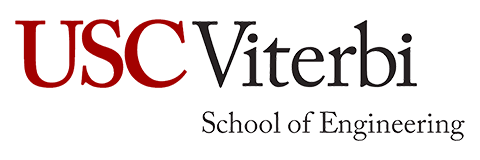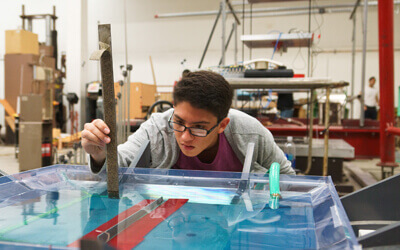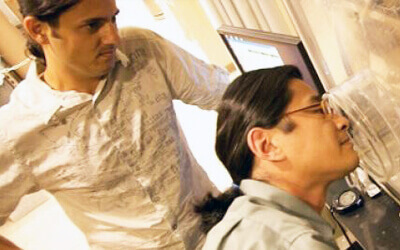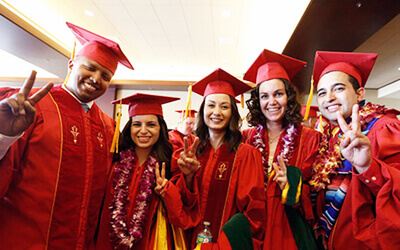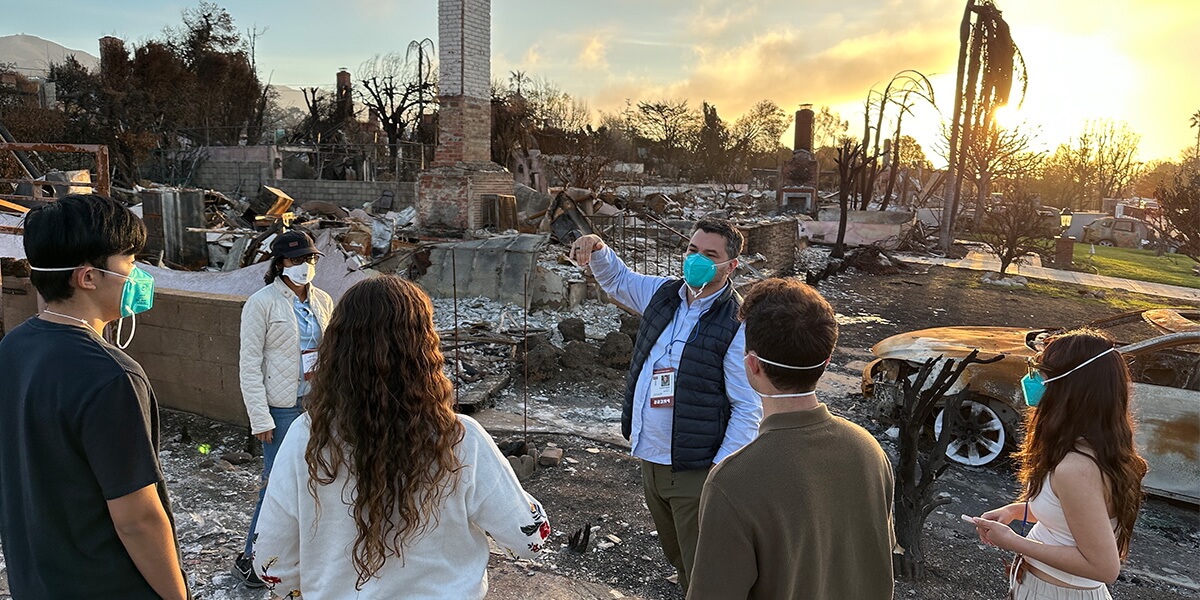
Professor Daniel Druhora and students in the Lives, Not Grades class survey the damage caused by the recent L.A. Wildfires. (Photo/Courtesy of Daniel Druhora)
When wildfires swept across Los Angeles, students in USC’s Innovation in Engineering and Design for Global Challenges program — better known by its motto Lives, Not Grades — quickly shifted their focus from international projects to urgent needs at home. Originally set to tackle sustainability and food security challenges in Kenya, the class redirected its innovative energy to help communities in their own backyard.
“Our ethos, in a sense, is we don’t look for crisis—the crisis finds us,” said Daniel Druhora, one of the instructors and an Emmy-winning filmmaker with extensive experience in humanitarian responses. “We realized Los Angeles needed us more.”
The class, which spans two semesters and transcends traditional academic boundaries, teaches students to identify and solve real-world problems through engineering innovation, design, storytelling, and entrepreneurship. Student teams also receive funding for customer discovery and product development. Last year’s course focused on developing solutions for Ukrainians displaced by Russia’s invasion, giving students firsthand experience with crisis-driven innovation.
In the wake of the Los Angeles wildfires, students quickly identified a gap in how disaster donations were handled. Supplies often poured into centers, but mismatched needs led to inefficiencies. Inspired to streamline aid, one team developed an Amazon web extension that matches online shoppers with specific, urgent needs of fire victims.
“Let’s say you’re buying cat food online, and a notification pops up telling you a fire victim nearby needs the same thing,” said Maddie Muller, a sophomore studying industrial and systems engineering and co-founder of Relief Match. “With one click, you can send it directly to them. It’s not just about reducing waste. It’s about getting the right help to the right people, exactly when they need it.”
Currently, four teams comprising 24 students are working to support wildfire victims, each tackling different aspects of the crisis through technology and innovation. Projects range from reimagining donation systems to rethinking home defense strategies in fire-prone areas.
“Design matters,” said David Gerber, a co-instructor and a professor of practice in civil and environmental engineering and architecture. “Design of the process to arrive at impact, design of the product or service to have impact, and design of the journey to drive impact for the individual, team, and societal growth.”
Student teamwork also plays a critical role. Kamila Fomin, a junior majoring in international relations and originally from Ukraine who took the class as a freshman and is now a teaching assistant, emphasized that leadership and chemistry are key to a project’s success.
“Regardless of how good an idea is, if the team doesn’t have the right leader or chemistry, the project won’t succeed,” Fomin said.
One team led by civil and mechanical engineering junior Mitchell Kirby is helping homeowners harness their own swimming pool water to protect homes during wildfires.
“Imagine if every homeowner with a pool could flip a switch and activate a rooftop sprinkler system,” Kirby said. “It gives people some peace of mind while evacuating, buys firefighters more time to contain ember spread, and helps conserve municipal water supplies. Our goal is to make this knowledge accessible and affordable.”
Brad Cracchiola, a co-instructor and USC Viterbi alumnus, added that the class fosters a spirit that goes beyond coursework.
“What we’re looking to do is help students tap into their internal passion to build something new, to change the world,” Cracchiola said. “It’s a deeper commitment that can’t be measured by a homework assignment.”
Through projects born of urgency rather than theory, Lives Not Grades pushes students to find answers with whatever tools they have — often imperfect, often improvised. In doing so, they are learning that innovation rarely waits for ideal conditions. It happens in the middle of the smoke, the noise, and the need.
Published on May 13th, 2025
Last updated on May 13th, 2025
